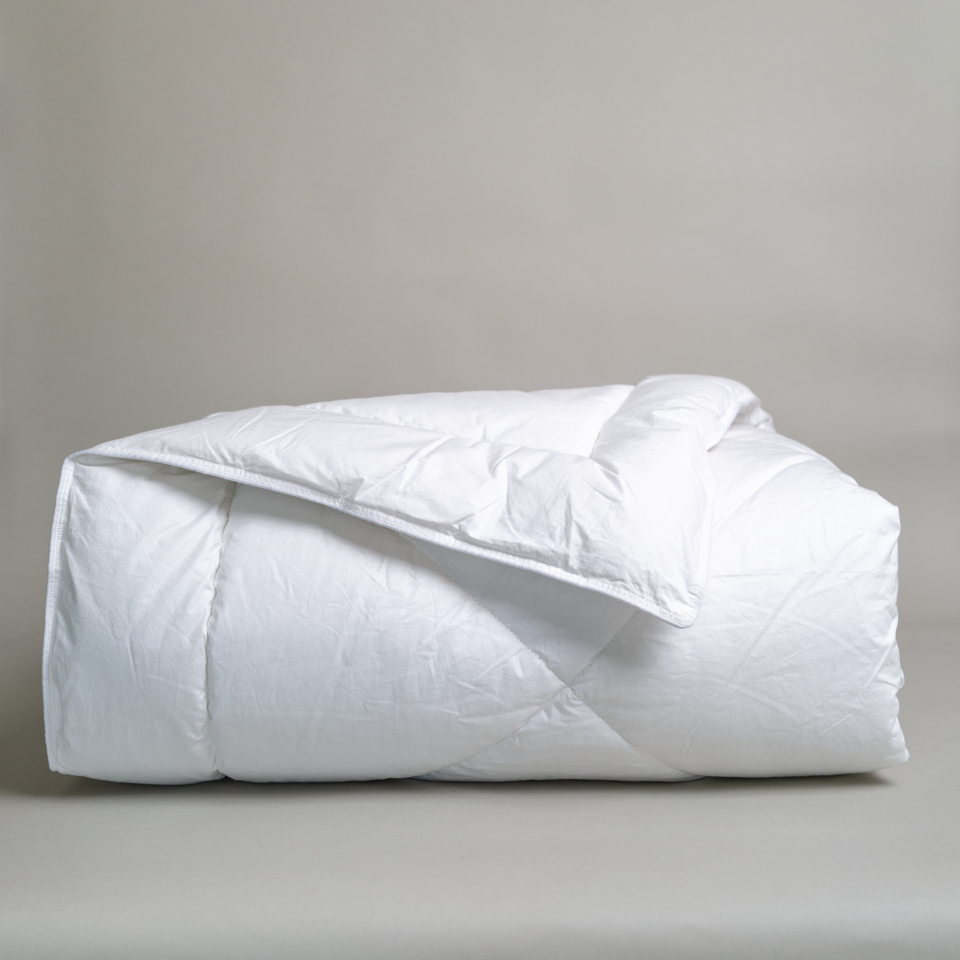By a certain age, you’ve arrived at what you like to wear to bed. Whether it’s the full-length pajamas that make you feel prepared for anything or the cozy flannel nightgown that feels like a hug, you’ve found your style, and it isn’t likely to change. We say, if it’s working for you, stick with it. If not, consider some of what the experts say about how the right sleepwear, like the right bedding, can improve your sleep.
Finding the right sleepwear can make a difference to how well you sleep
Like a cup of tea, a warm bath, or breathwork, putting on your sleepwear is part of a bedtime routine that signals your mind and body it’s time to slow down in preparation for sleep. Your sleepwear is a matter of personal preference based on your nighttime routine and the way you sleep. What you wear (or don’t wear) to bed is as important an element of your sleep environment as your bedding, and deserves the same consideration.
1. Do you sleep hot or cold?
Before selecting the style of sleepwear, consider the season, the temperature of your bedroom, and how warm or cold you sleep. Experts recommend adults keep the temperature in the bedroom somewhere between 60 and 67°F to optimize sleep. The body’s core temperature decreases as part of the process of falling asleep. Heat can negatively affect this process. On the other hand, a bedroom that is too cold can cause the body to have to work harder to stay warm. Finding and maintaining the sweet spot is where your sleepwear can make a difference.
If you sleep cold, consider a long night shirt or pajamas with long sleeves and pants in cotton flannel. If you sleep hot, you might want to look for a shorter night shirt or short pajamas in a lighter, moisture-wicking fabric like bamboo or cotton. Our sheet pjams™ are made in either cotton or a combination of bamboo and cotton yarn, which create breathable and sweat absorbent fabrics for sleeping.
If you have a chronic skin condition like psoriasis that makes sleeping more difficult, selecting your sleepwear is more than a matter of preference. You’ll want to be sure to choose soft and light fabrics that allow your skin to breathe in a style that is loose so as not to irritate any affected areas. As with your bedding, you’ll probably want to stick with fibers like cotton, linen, bamboo, or silk.
We haven’t overlooked the possibility of sleeping nude, particularly if you sleep hot. Sleeping naked lets you cool down faster and allows for greater air circulation. You may want to consider more frequent washing of bedding that is now coming in full contact with your skin.
2. Do you move around when you sleep?
If you move around when you sleep, a long nightgown can get tangled around you or bunch up around your middle. Consider pajamas that are loose enough not to bind you but fitted enough to avoid tangling or bunching.
3. Do you take care of others at night?
Whether you’re getting up to take care of small children or older adults, going to bed in something that lets you take care of others without “getting dressed” and then “undressed” again can make the nights easier. You’ll also gain the benefit of feeling prepared in case of an emergency.
4. Do you wear them for more than sleep?
If you like to change out of your street clothes as soon as you arrive home and athleisure wear is not your thing, look for nightshirts or pajamas that bear some resemblance to clothing like our sheet pjams™. They look great over pants and have two pockets for your cellphone or keys. When it’s time for bed, consider exchanging these “house clothes” for your sleeping pajamas as part of your bedtime routine to signal your mind and body it’s time to prepare for sleep.
5. Are they easy to care for?
Whatever you choose, you’ll want your sleepwear to be long lasting and easy to care for, particularly if you sleep without underwear. Sleeping without underwear has pros and cons: it can eliminate trapped moisture, keeping things dry and allowing for better air circulation; however, your sleepwear and sheets will need to be washed more frequently to keep them clean and bacteria free. If you sleep in underwear, avoid tight underwear and choose fabrics that are soft, absorbent, and breathable like cotton and bamboo.
Underwear or no underwear, you wear your sleepwear for long periods of time during which they collect sweat, dead skin cells, saliva, and any lotions or creams you may apply as part of your nighttime routine. Washing them after each wearing lets you enjoy fresh jammies every night. Make it easier by choosing those in fabrics that can withstand repeated washing and drying.
Wear what works for you and lets you sleep.
-The Team at down etc
Read more:
Bedtime Rituals for Better Sleep
Incorporating Tea into Your Bedtime Routine Can Help You Sleep
DISCLAIMER: You should not rely on any of the foregoing as a substitute for, nor does it replace, professional medical or health and wellness advice, diagnosis, or treatment by a healthcare professional. If you have specific concerns or a situation in which you require professional or medical advice, you should consult with an appropriately trained and qualified specialist, such as a licensed physician, psychologist, or other health professional. Never disregard the medical advice of a physician, psychologist, or other health professional, or delay in seeking such advice, because of the information or content offered or provided on the Site. The use of the Site and all information and content contained thereon is solely at your own risk.






